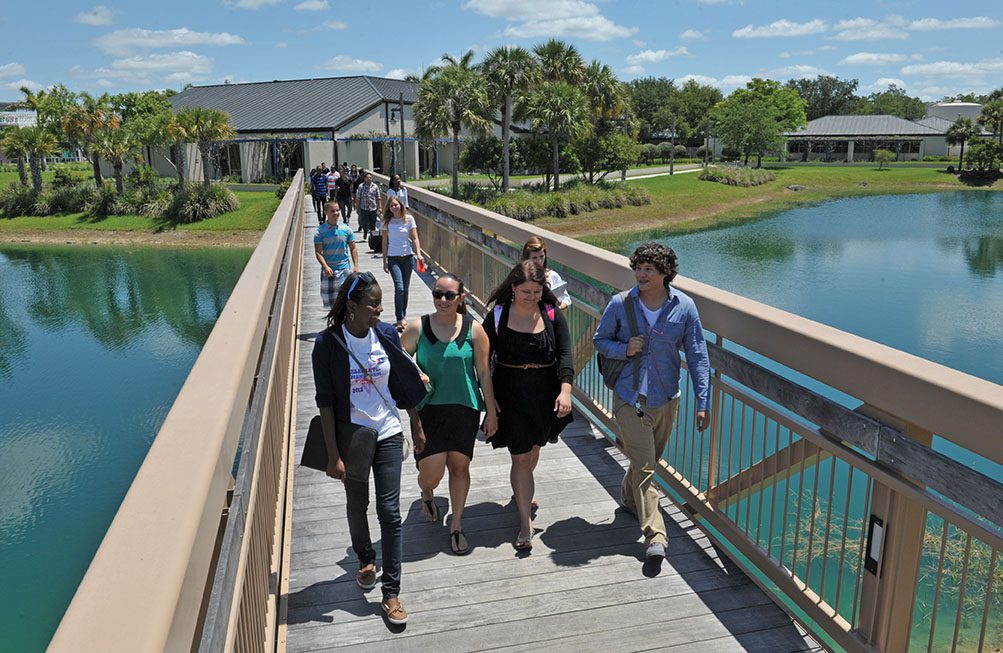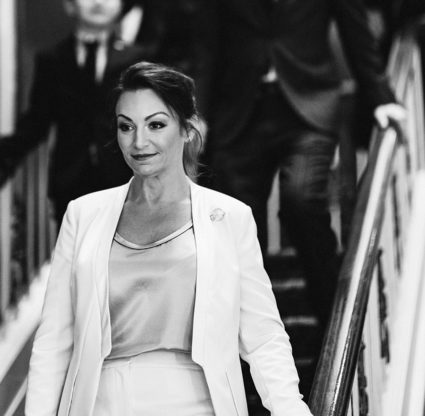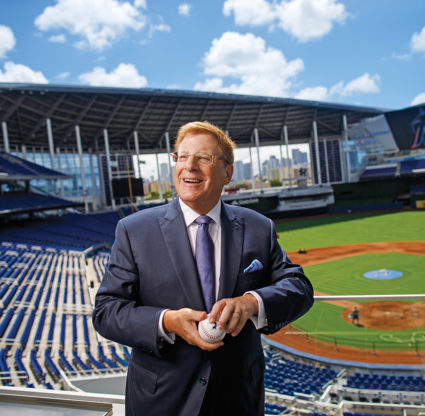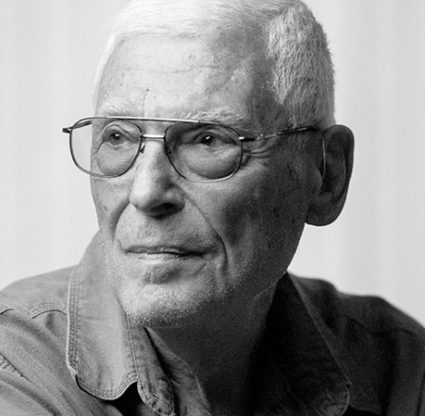Not long ago, if you were to ask a college-bound teenager for his perception of Florida SouthWestern State College, he might have uttered something like “13th grade.”
No campus housing. No sports. No one (well, almost no one) enrolling from outside the region. No college paraphernalia, even. The logo was a torch atop a pillar. Not exactly the kind of thing that sells T-shirts.
Something has happened this year—at least at the flagship Fort Myers campus, anyway. The college feels collegiate.
The school’s 2014 name change, from Edison State College to Florida SouthWestern State College, has taken hold (even if long-time residents still grimace at the trademark dispute with New Jersey’s Thomas Edison State College that spurred the re-naming). The 400-bed residence hall is full—with a wait list. Out-of-state enrollment is up, thanks to a new recruiting effort. Median age is down. Bachelor’s degrees now number 10. More faculty are taking on research projects; more students heading overseas to study. There’s a new mascot, a slightly menacing buccaneer, and college colors (purple and teal) that have spurred both merchandise sales and a growing sense of identity.
And the biggest change of all: Sports are back. A $25 million, 75,000-square-foot Suncoast Credit Union Arena is taking shape at the Fort Myers campus. Across town, FSW has transformed the City of Palms Park, the former spring training home of the Boston Red Sox, into a collegiate home field that is the envy of the National Junior College Athletic Association. Baseball and softball debut this year; basketball takes the court in 2016-17; volleyball follows after that. The Buccaneers played their last season in 1997 and went on an 18-year hiatus, driven by an enrollment shift toward older students less likely to play or watch athletics. Fans transferred their loyalty to the Florida Gulf Coast University Eagles.
That hurt, says President Jeff Allbritten.
“When we dropped athletics, we lost that connectivity. We dropped it right at the time FGCU was born. It was a perfect storm, they picked up the torch and ran with it, and I think what happened is we withdrew internally,” Allbritten says.
Community involvement shrank primarily to performances at the Barbara B. Mann Performing Arts Hall (which many patrons don’t realize belongs to the college) and then to tongue-wagging as the school was rocked by a series of transgressions leading to probation by its accrediting body and the resignation of longtime president Kenneth P. Walker in 2011.
Allbritten, formerly the college’s Collier County president, was lured from the presidency of Macon State College to come home and straighten it out. At the time, the Southern Association of Schools and Colleges had told the school it needed to correct 14 different problems, ranging from a highly publicized course-swapping scandal to accusations that administrators weren’t qualified for their positions to the four-year nursing degree program lacking accreditation entirely.
Allbritten straightened—full accreditation was restored within a year—and then reimagined.
 |
|
The Buccaneers have taken over City of Palms Park, formerly the spring training home of the Boston Red Sox. (Photo by Brian Tietz.) |
FSW may be the granddaddy of Southwest Florida higher education, but it’s pushing for a fresh image and new relevance. It’s already a major player: With campuses in Lee, Collier and Charlotte and a learning center in Hendry/Glades, FSW is the region’s largest institute of higher education. Its turf, spokeswoman Teresa Morgenstern likes to point out, is the size of the state of Rhode Island. As of this fall, 15,742 students were enrolled—about 1,000 more than FGCU—and 677 full- and part-time faculty members led courses in 44 different degree and certification programs.
The administration must juggle competing audiences and interests: a desire to capture young, high-achieving high school grads while upholding its mission as an open-enrollment college; the development of university-like programs on a campus that remains, for most students, a two-year commitment; an institution that works in tandem with its younger cousin—but not in its shadow.
FSW was born in 1962 as Edison Junior College in a former elementary school in downtown Fort Myers. Even from the beginning, the college suffered from a bit of identity crisis; snowbirds and transplants assumed it was similar to the trade schools of the Northeast and Midwest. It wasn’t, Allbritten says. Although Edison certainly had its career preparatory programs, the college emphasized liberal arts courses leading to associate degrees.
It eventually became Edison Community College, built its own campuses and kept growing. In the 1990s, as Florida’s economy and population boomed, the state suddenly faced a couple of academic predicaments: an inadequate number of higher ed seats and, by 2005-2006, a 30,000-person K-12 teacher shortage and questions about how to educate enough college education majors to man those classrooms.
“We had 11 or 12 public universities for a state that at the time was the fourth-largest state in the nation. You have states half our size that have double the number of universities,” Allbritten says. To increase capacity, the state could build new universities—an expensive undertaking in a tax-averse, retiree-heavy state—or expand its two-year colleges. In Southwest Florida, it did both.
In 2001, the legislature authorized its two-year colleges to offer bachelor’s degrees in areas of workforce need. Five years later, after undergoing an intense eligibility and accreditation review, Edison enrolled its first 13 baccalaureate candidates in public safety management. In 2008, the college was renamed Edison State College, reflecting its expanded role. Today, FSW offers 10 baccalaureate degrees ranging from teaching to nursing to supervision and management.
There’d been skeptics all along, Allbritten acknowledges, observers who commented about “mission creep” and suggested that two-year colleges were getting “too big for their britches.” And it was a challenge on campus, too.
“For 40 years, this was an associate degree-granting institution. There was a mental construct with that. We’re starting to introduce a totally different expectation and culture,” he says. “You go into any organization and start changing things, people start going, ‘Hey wait a minute. Change is great. You go first.’”
To him, the two-year, four-year thing is an old story. FSW became both. The question was, what else could it become?
“We’ve grown out of a past that many people still want to pigeon hole us in,” Allbritten says.
The majority of fsw students, about 66 percent, are part-time and pursuing associate’s degrees. But the college has started to adopt the programs and behaviors of the four-year institutions: out-of-state recruiting trips; efforts to attract honors students; a new grant pool for faculty research; the conversion of an old science hall into research labs; international study opportunities; talk of an additional residence hall and more on-campus activities (ground broke on a pool this fall); arts events of metropolitan caliber.
“The mission of the college is to prepare our students to be global participants in an interconnected world, but most of our students have not even been outside this part of Florida,” says Laura Weir, executive director of the recently launched Center for International Education. FSW students this academic year will go to France to further their language training; to an international AIDS conference to share their research (FSW’s faculty boasts an internationally recognized AIDS expert); to Nicaragua for a comparative government study. The college is also the southernmost member of the University of the Arctic, a consortium of institutions focused on education, research and academic partnerships.
Beyond providing a more robust student experience, Allbritten hopes the business community will more frequently turn to FSW for data, research and consulting, elevating its status in the academic and corporate communities.
This year, he set up an Office of Sponsored Programs with a $100,000 faculty research pool and support for professors chasing other grant sources. One active researcher is School of Education Dean Lawrence Miller, a recent transplant from the University of Washington. He is continuing his work studying how new models of school funding can support individualized learning. Miller says he came to FSW, where he oversees both the school of education and the collegiate high schools, to put research into practice.
“What I’ve been struck by is the caliber (of faculty) that is already there,” Miller says. He sees FSW as a place with the potential to innovate.
Faculty are growing FSW’s prominence in other ways. Jade Dellinger, the director of exhibitions and collections at FSW’s Bob Rauschenberg Gallery, is leveraging his long-time career as a museum curator to bring globally recognized artists here, including Yoko Ono and Wayne White (who graced the wall outside the gallery with a portrait of himself as the FSW Buccaneer). White’s opening event last September—part exhibition, part performance art—is scheduled to be spotlighted in Sculpture magazine this April. It featured a giant Rauschenberg puppet created there on campus.
“This is really atypical,” Dellinger says. “Most of the exhibits you see here you would not be able to see outside of major museums.”
None of this should surprise anyone, suggests Allbritten.
“We educate students, we do scholarly things, we have faculty involved in publishing and research and grant writing, and that really shouldn’t seem that odd to people,” he says. “The vision was creating a college that has multiple significances to the community.”
Of special significance: sports. They’ll round out the formula Allbritten considers essential to building a competitive college: academics, housing, athletics.
 |
|
Fans cheer during the opening game of baseball season. (Photo by Linwood Ferguson.) |
Suncoast Arena will boast 3,300 seats, six skyboxes, a fitness center, a hospitality event center, recreational and competitive courts. It’s designed to be a place that can host collegiate, community and professional sporting events (already the City of Palms Classic basketball tournament and The Perfect Game baseball tournament have announced intentions to appear there), as well as concerts and shows that appeal to students and the public at large.
“This arena, when we got the $5 million gift, no one believed we could do that. Even our ardent supporters didn’t believe it,” Allbritten says.
But the appetite for a third major sporting and entertainment venue (the others are Germain and FGCU’s Alico) is there, says Athletic Director Carl McAloose, who routinely fields phone calls from developers. They’re contemplating apartments or restaurants in the neighborhood, anticipating a college-driven boom in population and entertainment opportunities.
FSW used to have quite a reputation for developing talent. Its alumni include U.S. Open champion Fuzzy Zoeller; PGA tour player Ivan Smith; three All-Americans and a couple of pros in baseball and basketball.
That was before a four-year university up the road offered Division 1 opportunities. Will young athletes come to Fort Myers for a two-year stint at FSW?
Definitely, say McAloose and his staff.
Softball coach Robert Iamurri combed at least 11 states looking for players last year. His roster includes three girls from New Zealand who had been looking for the opportunity to play and learn abroad.
“Going to a junior college in softball is very competitive. The perception of it is you grab local kids from the area to play. But the athletes I recruited could play real good Division 2 or Division 1. They just fell through the cracks,” Iamurri says.
Some athletes deliberately go the two-year route to grow their skills, boost their draft rounds or play right away as freshmen. The coaching jobs proved equally competitive; McAloose got 500 applicants for the baseball and softball positions and 700 for the basketball ones.
For baseball coach Jamie Corr, landing the top job represented a homecoming. He played for the Buccaneers in 1993.
“The opportunity to come back and resurrect the program is a dream come true,” Corr says.
His team includes top-ranked recruit Willie Rios, who will play for FSW this year and then head to the University of Miami, along with students from around the country.
Jett Swetland, 18, of Ohio, is among them.
“I saw the facilities and my heart was set after that,” says Swetland, referring to City of Palms Park. He had contemplated colleges in Michigan and West Virginia before settling on Florida, where he could train year round. “I wanted to get down south to be seen and play against high-caliber competition.”
If FSW is stepping up its game, where does that leave FGCU?
Pursuing its own master plans and not worried about the growing mission of its collegiate cousin. The presidents and chief academic officers get along well and speak often, FGCU President Wilson Bradshaw says. Collaboration is key and driven by a simple fact: “The demand for higher (education) in this state cannot be met by the university system,” Bradshaw says.
FGCU is deliberately slowing its enrollment growth, and it’s seeing more students from outside the state, Bradshaw says. Colleges such as FSW and the private Hodges University are essential to meet the local demand.
“We don’t think we will compete with them; I think we will complement each other,” Bradshaw says.
FSW students choose the school for any number of reasons—affordability, proximity to home, programs and the opportunity to bolster academic skills before transferring to a bigger school. Some of them are happy FSW is expanding its role; others, a little leery about sports overshadowing other campus attributes or needs.
Bre Eneix sits on a shady bench one morning on the Fort Myers campus. She’s a freshman who graduated from Gateway Charter High School in Lee County and says she was ready for college—but not the giant leap of moving away to a big university.
“The classes are smaller. You get that one on one with teachers if you need it,” she says.
Freshman Mercedes Marzetti and sophomore Milton Flores like the direction in which FSW is heading. Both chose FSW for its affordability; Flores started at FGCU and transferred to FSW for financial reasons. The difference between the schools is narrowing, he says. Marzetti agrees.
“It’s the same education,” she says. She wants to study nursing; he wants to transfer to the University of Florida for dentistry or sports medicine after completing his associate degree.
Others, though, worry too much energy will be diverted to its new
student-athletes.
“It’s good that sports are coming back for athletes, but what about people who don’t play sports?” asks Veronica Gibson, 18, a sophomore from Long Island who is studying nursing.
Gibson says FSW needs to put more effort into developing programs for residential students.
“To me, you just come to school and go back to the dorm. Pretty much if you don’t have a car, you’re stuck,” she says. (The college’s housing director, for the record, says he’s working to make campus a vibrant place for its residential students.)
Likewise, Juan Castaneda, a sophomore, sees campus needs aside from athletics. He believes the number of group meeting rooms in the library, for example, is inadequate.
“Maybe they could work on that instead of the baseball team,” Castaneda says. Otherwise, though, he feels he’s getting a good—and affordable—education.
Change of any sort can be disconcerting, and administrators will be wise to keep an ear to the ground to hear the concerns of students and faculty.
But communications professor Myra Walters, who has been at FSW for 32 years, senses a new energy at the school that started with the residence hall and is growing with the athletes, the school merchandise, the new programming and increasing geographic diversity.
“It’s been really fun communicating with those students and talking to the students who live on campus. The culture, you just feel like you are on a college campus,” she says.
And that’s what Allbritten wants—for FSW to just be known as a good “college.”
“I’m trying to create a college here. No more hyphen college. Or a ‘this’ college. We’re a college. Period. No more modifiers.”

The Challenges Ahead
Florida SouthWestern State College’s ambitions have it edging toward the programming and allure of a university; nevertheless, it faces the reality of its charter: to serve anyone who wishes to pursue higher education.
FSW is an open-enrollment institution, meaning anyone who registers gets in, provided there are seats available.
That means even as FSW pushes for higher-achieving students, it can’t abandon its base. No small task: As of 2013, the retention rate for first-time freshmen seeking an associate degree was 56 percent. The three-year completion rate for students starting their associate in 2010 was about 41 percent.
FSW was one of seven state colleges to reach “gold” status in the state’s first performance funding scores. Nevertheless, administrators there know there’s work to be done to ensure its vastly diverse student body gets a fair shot at completing a college education.
Efforts include the “Cornerstone Experience” class required of incoming students. It teaches everything from time management to accessing campus academic support programs. A tracking system flags waning attendance and grades. And growing sports and activities helps students feel connected to the campus, administrators believe.
Administrators and faculty think drawing higher-level students to the campus may actually help raise the bar for everyone else.
Professor Martin Tawil, president of the faculty senate and a Cornerstone Experience instructor, is beginning to see a difference.
“I think I see a difference in the writing, in the discussion; we get a variety of points of view—we get a lot of different perspectives,” says Tawi. “It’s going to take time, but looking at a long-term goal, you’re going to see a different caliber of graduate.”





